During the repair work, if the walls are trimmed with plasterboard, it will be a question: "How to plastering drywall?". At first glance, everything seems to be quite simple, but it is not, because very often this material is called dry plaster.
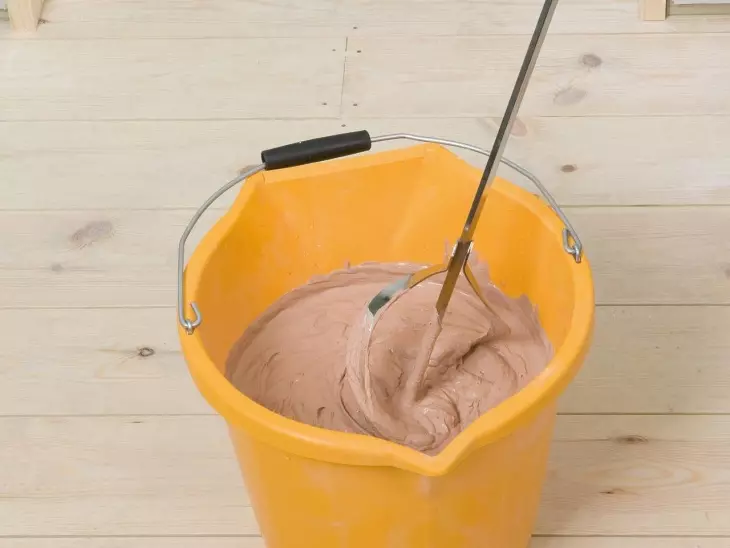
Plaster
That is why newcomers often have questions: "Is it possible to use drywall instead of plastering?", "What is better plaster or plasterboard?". Tell me in more detail.
Until today, the wizard did not reach the only right output. Many believe that plastering plasterboard does not apply, others argue that plasterboard plaster is still possible if you follow certain rules:
- You can apply plaster only on moisture-resistant plasterboard;
- It is better to use primer solutions;
- correctly apply the plaster thinly, but in several layers;
The only general conclusion to which experienced masters came - plastering plasterboard with their own hands is the most popular way of finishing work.
When do you need to plaster drywall?
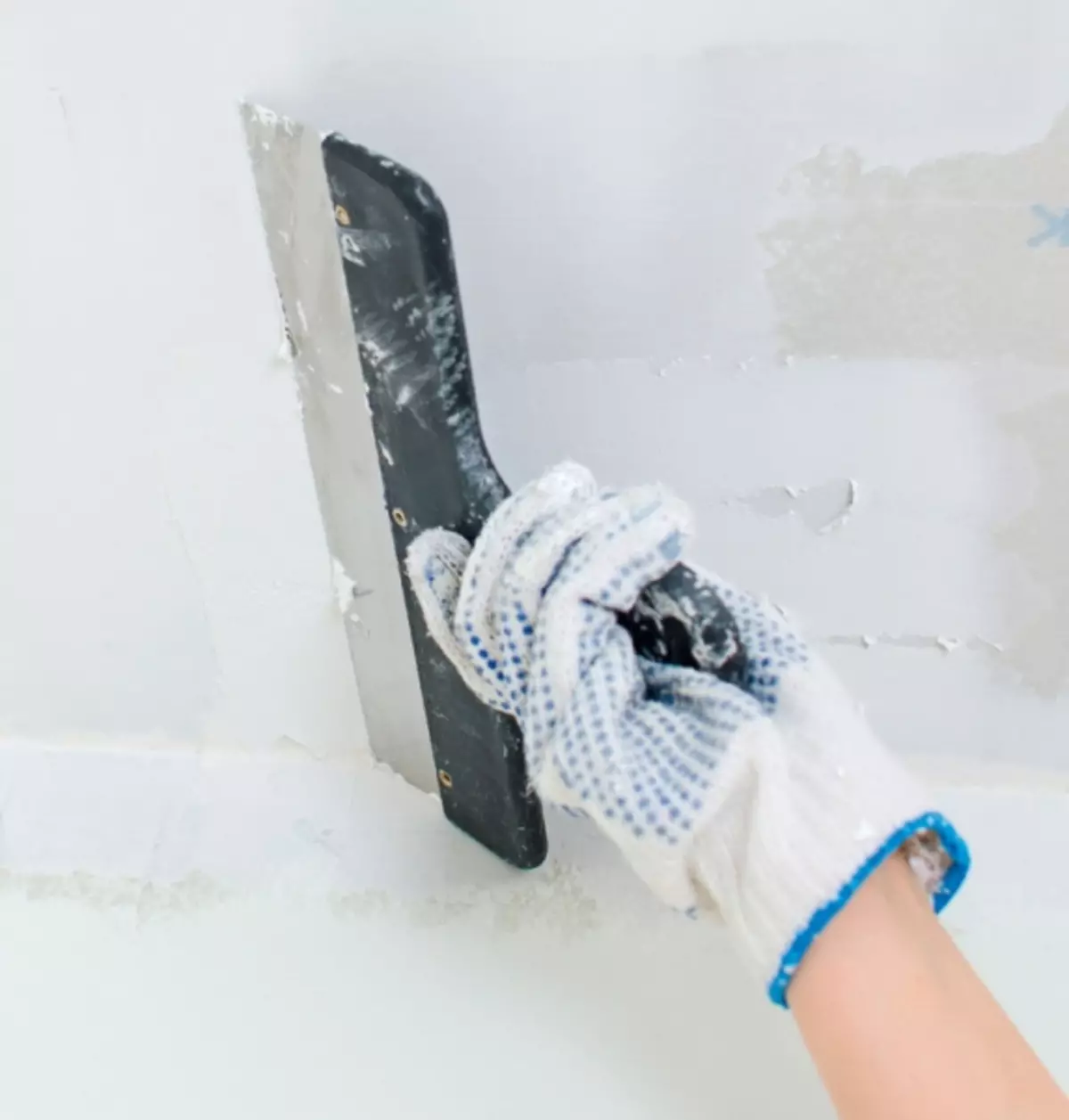
Plastering plasterboard
Plastering on plasterboard is a complex and very unpredictable occupation due to the fact that the sheets are capable of deforming under the influence of moisture from the plastering solution and the thick layer of the plaster itself, and maybe drift and the design will last for many years.
What types of drywall are and for which they are used are displayed in the table.
| Variety material | Scope of application | Color material | Marking (Color) |
| Plain | Used for wall decoration that do not carry a large load | Grey | Blue |
| Moisture-resistant | Apply for finishing works of bathrooms, bathrooms and kitchens | Green | Blue |
| Fire resistant | Used to arrange air ducts and communication mines | Grey | Red |
| Moisture-shaped | Use to achieve fire resistance indoors with high humidity | Green | Red |
And so, when it is worth plastering drywall:
- If the plasterboard design has small irregularities or dents;
- You can stucify the shaded joints;
- During the plasterboard coating with decorative plaster.
Nevertheless, if you comply with the technology of applying plaster on plaster sheets, negative consequences can be avoided.
Preparatory work
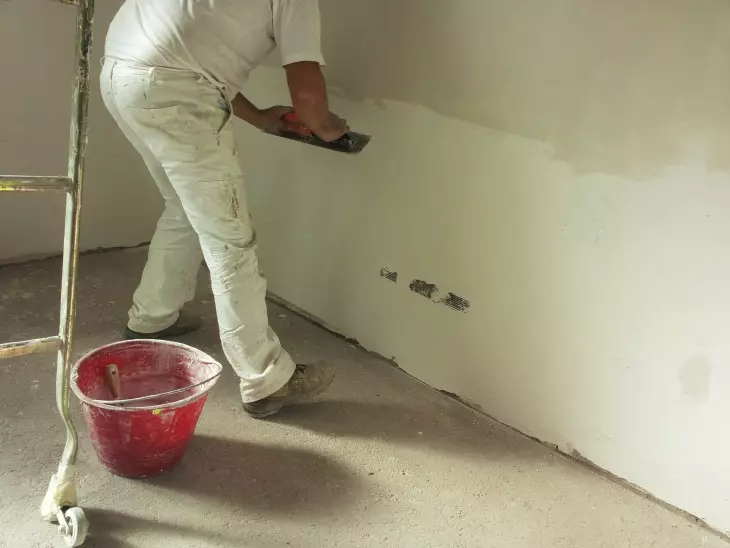
As practice shows, the masters prefer the complex and painstaking installation of the profile in the level, so that after fixing the drywall, an absolutely smooth surface was obtained. They are trying with small labor costs to obtain the same result that can be achieved when using liquid plaster solutions.
So if one material can be replaced with another, should they combine them? The answer is obvious - of course, it is possible, especially if you plan to use decorative plaster as an finishing processing, not wallpaper and paint.
In this case, plasterboard will serve as a flat surface, which, besides, do not have to specially prepare. But, it is better not to forget that this material can be deformed from moisture, so correctly pick up the waterproof sheets.
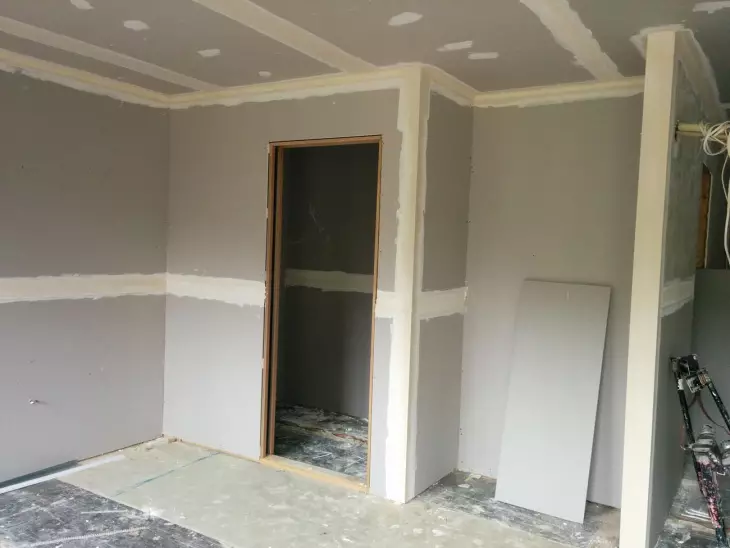
Plastering plasterboard coatings
The following is what it is necessary to think about - the primer solution of deep penetration and the finish coating, which is better to choose quick-drying masses, so that the moisture absorbed the drywall as a result of the surface harvested surface.
If we are already talking about the process of plastering, suppose that all designs from drywall you have already mounted. But, before moving to the finishing coating, it is necessary to prepare the walls as much as possible. Of course, plasterboard sheets and so fairly smooth, but during their installation you will have the place of joints of the material and recess from screws, which will also require elimination.
Next, consider the step-by-step scheme of the preparatory process.
- Padding
To increase adhesion to each other all the layers of finishes, with the help of a primer solution it will be necessary to cover the entire area of construction. For such work, wide brushes or foam rollers are well suited. Try to press the primer from the roller as much as possible, so that the extra moisture absorbed into the design and did not lead to its deformation.
- Shocking joints and seams
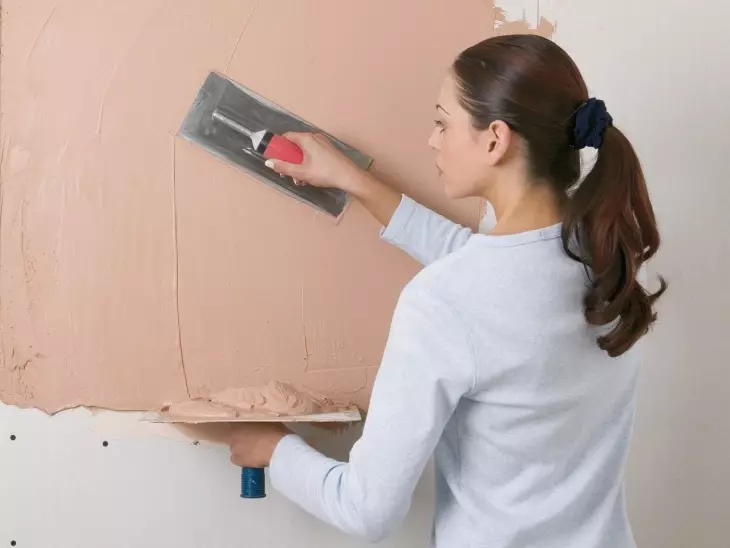
Plastering plasterboard
Since putty are sold already in the finished form, you can calmly open the jar, with the help of Kelma to gain a mass and subtly distribute it in places of joints and deepening from screws.
- Correction of corners
In places of joints of plasterboard sheets at an angle, it is not enough to correct the defects of one putty. It is better to use special profiles that are superimposed on top of putty. As a result of such pressed, the protruding surplus of the solution will need to be smoothed throughout the profile, covering it.
How to cover plasterboard?
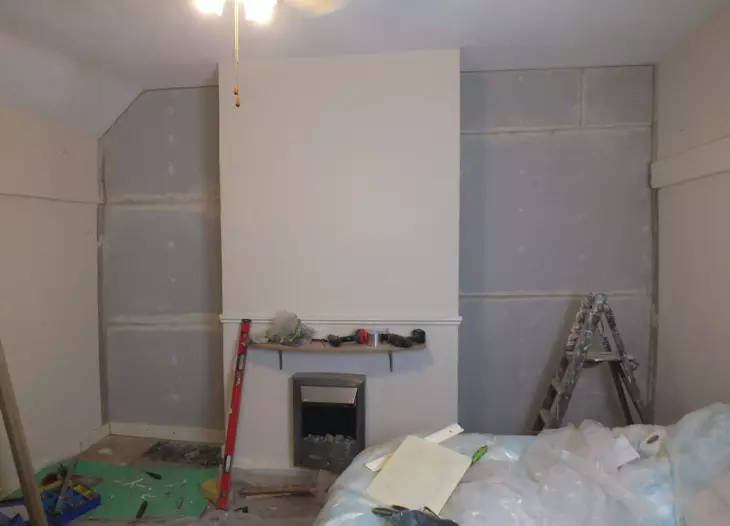
Plastering drywall wall in the room
After putty, the surface must be reused with a primer solution. This is done so that the plaster properly lay on the wall.
If you have not changed your decision in the side of the walls of the walls with wallpaper, you can look closely to the finish mixtures. It is necessary to immediately say that there are not many options in front of you:
- pasty large-scale mixture;
- Stone dry crumb of colored minerals.
If your choice falls for the first option, a metal culma will be required with a smooth and smooth edge, and for liquid mixtures - a spray gun.
If for the work you will use the stone crumb, everything will pass much easier. To begin with, you will need to apply a glue solution on plasterboard sheets, and then with the help of an air compressor, spray the crumb.
So, when the preparatory work is completed, you can proceed to the last step - wall coating by plaster. This requires a rectangular spatula, a roller with texture and celma (sometimes it may be necessary for the ironing).
If you need to cover plaster and walls and ceiling, you need to start with the ceiling, but only then switch to the processing of vertical surfaces. Since it is not too convenient to work on the ceiling, take a roller with a special extension for the handle, which will facilitate the execution of "high-altitude" works.
To apply the first smears, you need to dial a small amount of solution on a cell and tightly press it to the wall at an acute angle. Plastering plasterboard is better to do its own, and not use sprayers, while your movements must be smooth, and the applied layer is thin. If the mass lay on the surface is not too evenly, it can be re-conducted by the CULMM to smooth the solution. The next stroke can be applied next to the previous one, without making any intervals.
When the first layer dries well, you can start a clean - the second. For him, it is used by all the same familiar to you Quelma, and the more smears you will apply the brass, the darker the surface will become. Together, Kelma can use a roller with texture, which will help in creating not only uniform, but also the embossed surface.
There is a certain technique for which the plaster mass is applied only with the help of a roller. In this case, it is necessary to ride the working blade of the roller in the mixture, which is pouring into a small container, and then cover the design with a uniform one movement moving upwards. Working with the roller, you will not need to smooth out the surface with a smoother, as you need to do when working with Colelma, the finish will turn out so high-quality and final.
But, note that for frescoes, the plaster needs to be applied only by Kelma.
Trim drywall under painting
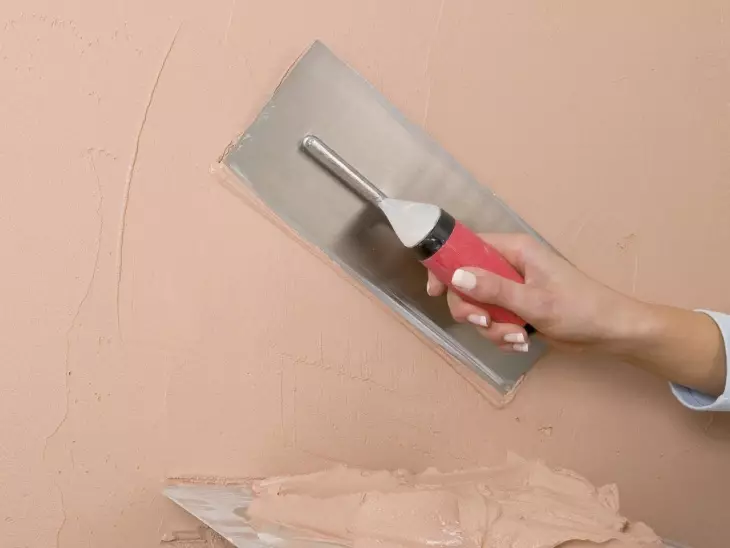
Plastering plasterboard walls
When the installation of plasterboard is complete, you can go to the next stage of finishing - painting.
Due to the smooth and smooth surface, the painting of drywall is the easiest and pleasure process.
But, experienced masters advise for better painting to do certain preparatory work, and it is better to fulfill sheets only after plastering.
To prepare a drywall for painting, a lot of work will not be required, but this is not the lungs. An aligning layer must be applied with a wide spatula, after which it is pretty waging to absolute smoothness. Next, it is worth covering the surface with a mixing solution and handle the design of a soft sandpaper.
Only when all these works are completed, you can begin painting the wall by any PVA based materials.
Be careful when plastering the surface under painting, because all the irregularities and flawed paint will not hide, but only aggravate your flaws made in the preparatory process.
What you need to know about plasterboard plaster?

Plastering on plasterboard
First of all, it is necessary to emphasize on the fact that the drywall solution should be involved in the gypsum. As a rule, such bags of the mixture are sold in a 30 cyllographer packaging. The solution is preferable to small portions, as the gypsum masses are characterized by rapid solidification.
On plaster plasterboard can be glued. But, if you do not have enough skills in this matter, it is better to progress and fix the sheets with nails or screws. They can be screwed into both the wall itself and in the frame.
What is still better: plaster or plasterboard - to solve you. We can only say one thing - drywall is allowed to apply instead of plaster to align the surface. Such installation work is done as quickly as possible, and are not so difficult as shuffling. Plasterboard sheets and a plaster solution are well combined, and can also complement each other.
The main requirement is to follow the technology of use and clearly comply with the instructions for use.
Article on the topic: Frameless furniture with your own hands: Frameless sofa
